Ceviche is the famous dish from Latin America where fresh fish and other seafood is “cooked” in lime juice and mixed with chilli, coriander/cilantro, onion and other flavourings. Also known as cebiche, seviche or sebiche, this quick and easy recipe makes a wonderful light meal for hot summer days, or an elegant starter.
The one thing that makes this ceviche recipe stand out from the rest is that it’s not too sour. Limes in South America aren’t as sour as ours!

Ceviche
Originating from the west coast of South America, today ceviche can be found in various forms from Mexico down to Peru and beyond. It’s also a dish that has been embraced by fine dining establishments around the world. It plates up elegantly and is an ideal light seafood starter to precede a richer main.
Plus, it’s the sort of dish that people don’t ordinarily think of as simple to make at home, so restaurants readily charge a small fortune for it.
I’m here to bust that myth! As long as you can get your hands on sparkling fresh fish, ceviche is dead easy to make – and super quick too!
Buying sashimi-grade fish suitable for raw consumption is readily available these days, making dishes like ceviche infinitely accessible for ordinary folk like ourselves!

Raw fish + lime juice + 5 minutes = Ceviche!
At its core, Ceviche is as simple as tossing raw fish with lime juice, then leaving it for 5 minutes to let the acid “cook” the fish, making it turn white on the surface, but still raw inside.
Here’s a comparison of the fish immediately after tossing with lime (fish is still translucent), then 5 minutes later, it’s turned white because it’s cooked!

It MUST be sashimi-grade fish
The ONLY fish you should use for ceviche is sashimi-grade fish that is suitable for raw consumption. It is not enough to just buy “fresh fish” from the stores – this only means it’s considered generally “fresh” from the fishmonger’s standpoint. It does not mean it’s necessarily fresh enough to eat raw. You need to check with the fish monger that it is “sashimi grade” (usually it will be helpfuly labelled 🙂 ) and is safe it eat raw.
I know that the thought of eating raw fish from the fishmonger versus at a restaurant might make some people nervous, but food safety standards nowadays here in Australia are such that you shouldn’t have cause for concern. I’ve been eating store-bought raw fish all my life since it became available in the late 90’s and I’ve never had a problem.
Of course, if you happen to have a fisherman friend, you can use virtually any freshly-caught fish – it’s all sashimi-grade! As a child, before sashimi was widely consumed in Australia, my parents would take us fishing every weekend just so we could catch fresh fish for sushi!

Best fish for ceviche
There is no one way to make ceviche, and there is no single “best fish” for ceviche because it’s driven by the types of seafood available in different regions! There’s plenty of options, so I’m going to list the most common ones for you:
Kingfish (pictured above) – prized for it’s soft white flesh, very popular in Japanese sashimi (shows how good this fish is!). This is one of 3 common sashimi-grade fish sold at Australian fish shops (along with salmon and tuna) and a popular choice of fine dining establishments;
Sea bass – traditionally used for Peruvian Ceviche and easily found in the UK/US;
Tuna – popular in Mexico (along with prawn/shrimp);
Mackerel – also popular in Mexico;
Prawns / shrimp – traditional in Ecuador and popular in Mexico, often with a dash of tomato juice;
Halibut or Patagonian tooth fish – Chile;
Salmon – though not traditional (because white fish is traditional), salmon is excellent made into ceviche. Easy to find in Australia;
Bream – many species, depending where in the world and widely used;
Swordfish – if you are lucky enough to get it(!), this is used in some Latin American countries.
Trevally – Although we haven’t seen it mentioned, raw trevally is beautifully soft-textured and would make a fine ceviche. Available at some good fishmongers here in Australia; and
Cod and mahi mahi – Popular options in America.
Fish that is not suitable for Ceviche
As a general rule, fish that are tender and not chewy when raw will make better ceviche. This is because the fish in ceviche is cut chunkier compared to the fine slices used in say fish carpaccio or sushi. Thus fish like snapper, grouper, some cods, flounder, which can be sometimes a bit tough eaten raw, are less suitable.

There’s no one way to make ceviche. Each country, city, restaurant and household has their own way. At its core, however, the avocado and jalapeño in this makes this a Mexican Ceviche.
What (else) goes in Ceviche
Here are the other ingredients required for this recipe:

Limes – the essential ingredient that “cooks” the fish;
Extra virgin olive oil – just a touch will take the sharp, sour edge off the otherwise totally sour dish. It’s not strictly traditional to include this, but it’s important to know that limes in Latin America – certainly in Mexico – are often not as sour as those in most Western countries, including Australia and the US. Without oil, I find Ceviche is too sour. Even in Mexico, I found most Ceviches there to be too sour! (*She ducks as Mexicans throw rotten tomatoes at her!*)
Avocado and jalapeño – these add ins are traditional in some versions of Ceviche found in Mexico. Creamy pieces of avocado are a sensational pairing with the delicate pieces of fish!
Coriander/cilantro – essential fresh herb flavouring for ceviche. Coriander haters – sub with chives;
Red onion – very finely sliced so it flops and melds with the fish;
Garlic – crushed using a garlic press so it’s minced finely and “juicy”. We just use 1 small clove – it shouldn’t be overly garlicky; and
Tomato – included in some traditional versions, I really love just adding a bit (not too much) for beautiful pops of colour and fresh juiciness.
How to make Ceviche
The making part is very simple, but I’ve found the key is the order in which ingredients are added – ie what is marinated with the fish, and what is best added later.
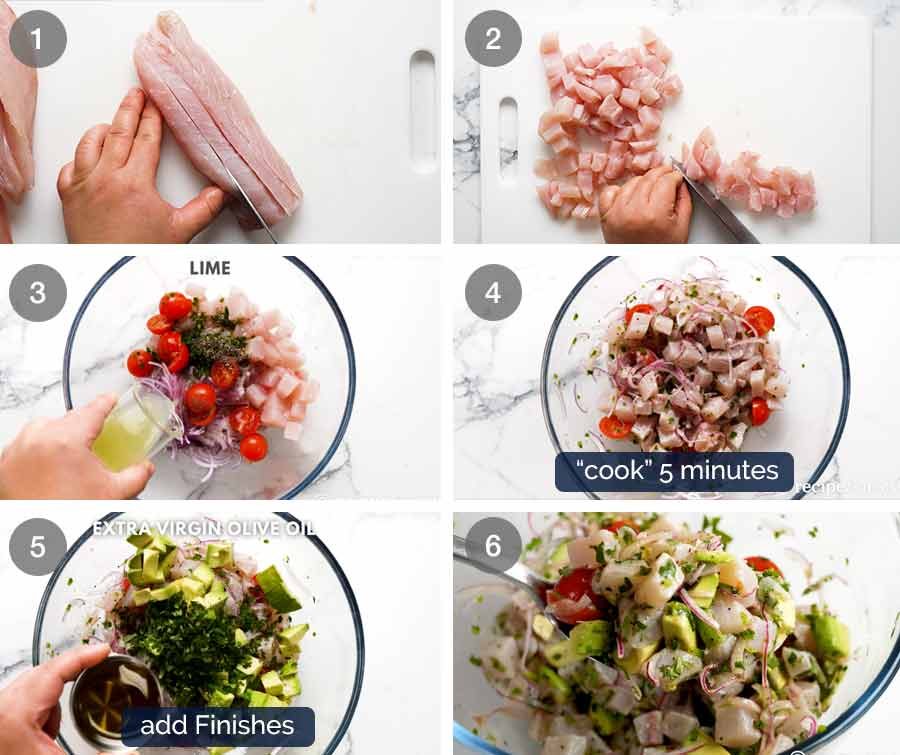
Fish – cut the fish into long strips;
Dice – then cut it into small cubes;
Combine fish with tomato, onion, jalapeño, pepper and lime juice. Do not add salt (this draws water out of the fish), avocado (these get bashed around too much when tossing) or olive oil (this dilutes the acidity of the lime juice and slows down the cooking too much);
“Cook” 5 minutes – gently mix, then set aside for 5 minutes to let the lime “cook” the fish;
Add olive oil, avocado, fresh herbs, salt then gently mix;
Serve immediately.
Despite what other recipes will tell you, there’s no need to be in a manic rush to get the ceviche on the table within 10 seconds otherwise the lime will over cook the fish. Ceviche is certainly best eaten fresh, but it’s still wonderful 20 minutes later. It’s not until around the 30 minute mark that the fish becomes a bit too firm for my taste (literally completely cooked through – but not like stove cooking so it’s not the best texture).
Note: In some countries (such as Peru), ceviche is traditionally left to “cook” for several hours in the lime but larger pieces of fish are used. I like using small pieces – for better texture and ease of eating.


How to serve Ceviche
Just as there is no one way to make Ceviche, there are plenty of ways to serve it too!
In Mexico and other parts of Central America, it’s often served in small “cups” or dishes , cocktail style, with corn chips or crispy tortillas/tostadas for scooping, as pictured above. I like using this idea to make platters of canapés to pass around at gatherings, as pictured on the below right.
In Peru it’s served as a meal with corn on the cob, slices of cooked sweet potato and sometimes with rice. In other countries it comes with plantain chips or rice.
In fine dining restaurants, it’s served in all sorts of fancy ways. One easy way is to spoon individual portions into a small dish with a side of crostini on the side (toasted small bread), as pictured below.

Of course, you can just by-pass all of that and just devour it straight out of the bowl with a spoon, which is exactly what I did. 🙂
I really hope you give this a go one day. Especially those of you who have previously been turned off by overly sour ceviche in the past.
Now – go make friends with some local fishermen! 😂 – Nagi x
Watch how to make it
Hungry for more? Subscribe to my newsletter and follow along on Facebook, Pinterest and Instagram for all of the latest updates.
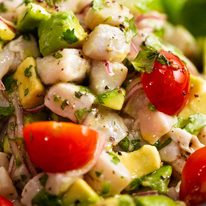
Ceviche
Ingredients
“Cooked” fish:
- 400g / 14 oz kingfish, tuna, sea bass or other sashimi-grade fish suitable for raw eating (Note 1)
- 1/4 red onion , very finely sliced using mandolin (so it "flops")
- 2 tsp fresh jalapeño , finely chopped (or green chilli) – add more or less for spiciness
- 8 cherry tomatoes , halved (large ones quartered)
- 1/4 tsp black pepper
- 1/3 cup lime juice , fresh (or lemon juice)
Add ins:
- 1/2 tsp salt , cooking / kosher (or 1/4 tsp table salt, Note 2)
- 1 avocado , ripe, cut into 1.25cm / 1/2″ cubes
- 1/4 cup coriander/cilantro leaves , roughly chopped (sub chives)
- 2 tbsp extra virgin olive oil (Note 3)
Instructions
- Cut fish: Cut fish into 1.25cm / 1/2" cubes.
- Toss in lime, leave 5 minutes: Place in a bowl with onion, jalapeño, tomato, pepper and lime juice. Gently toss, then set aside for 5 minutes, mixing gently once.
- Add avocado then serve! Sprinkle over salt, then add avocado, coriander and olive oil. Gently stir, then serve immediately with corn chips (see in post for other ideas).
- Ceviche will be good for 20 minutes or so, then fish will start to overcook and firm up. Do not leave overnight (for food safety reasons).
Recipe Notes:
- Kingfish (pictured in post)- popular choice of fine dining establishments
- Sea bass – traditional in Peruvian
- Tuna and mackeral – popular in Mexico
- Prawns / shrimp – traditional in Ecuador, popular in Mexico
- Halibut or Patagonian tooth fish – Chile
- Salmon – not traditional but excellent for ceviche
- Bream – many species all around the world
- Swordfish – used in some Latin American countries.
- Trevally – not traditional in South America, but beautifully soft-textured and excellent for ceviche
- Cod and mahi mahi – Popular options in America.
Nutrition Information:
More Fresh Fish recipes
More recipes that make the most of sparkling fresh fish!
Life of Dozer
Lazy bugger – stretching out as far as he can to rescue his toy because he can’t be bothered to dive back in. Can you imagine if pool Lifeguards had the same attitude?? I’m gonna stretch out to try to save you, but if I can’t reach you without getting my feet wet then too bad, I’m gonna leave you floating facedown in the pool! 😂

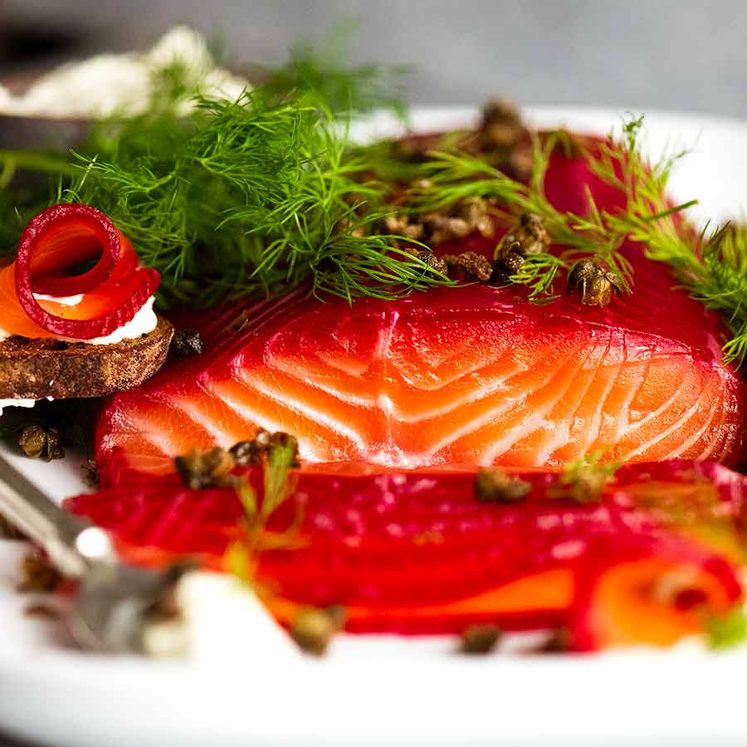
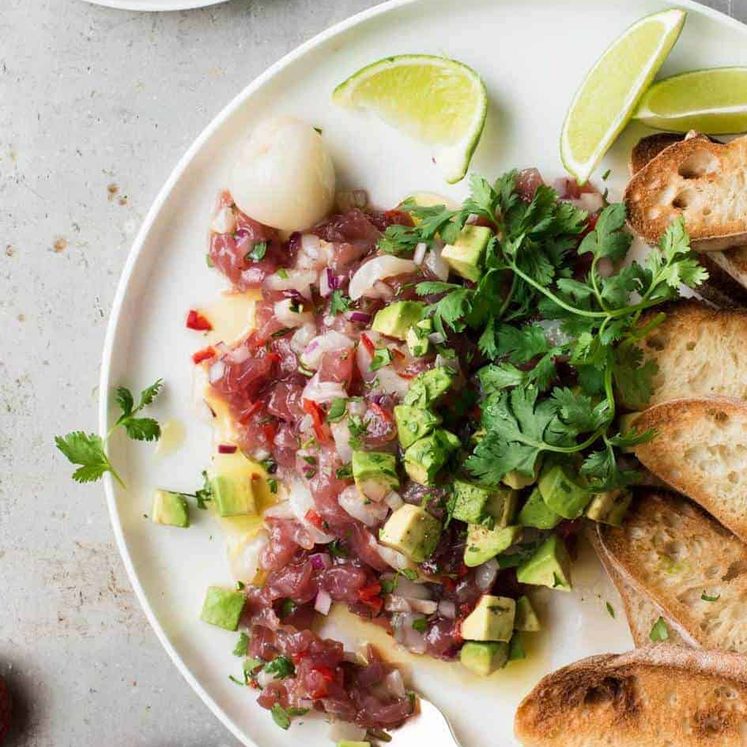
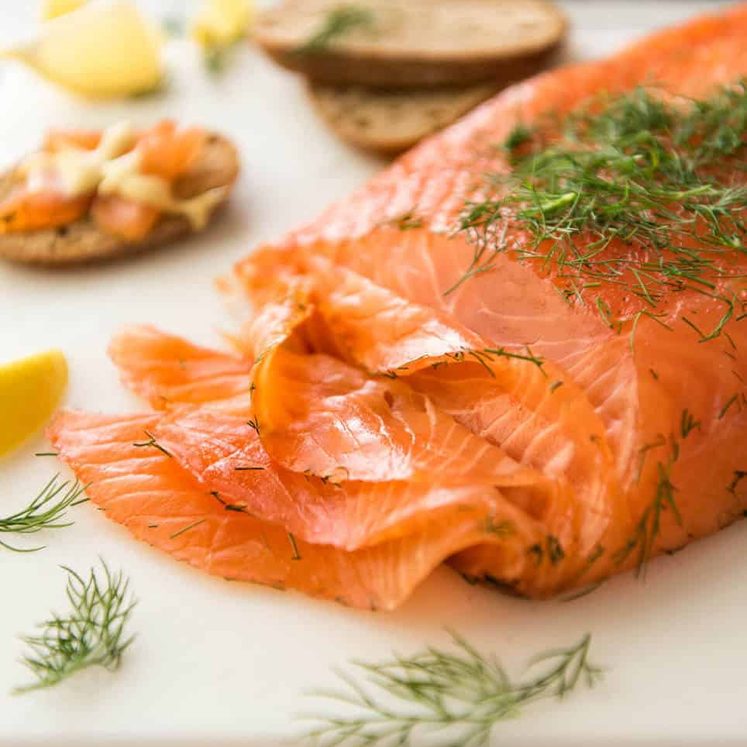

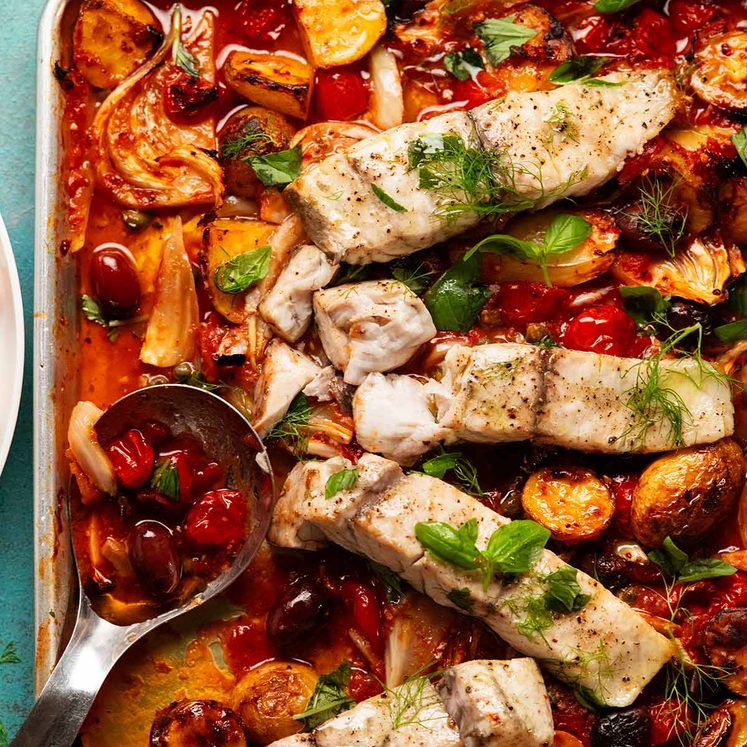
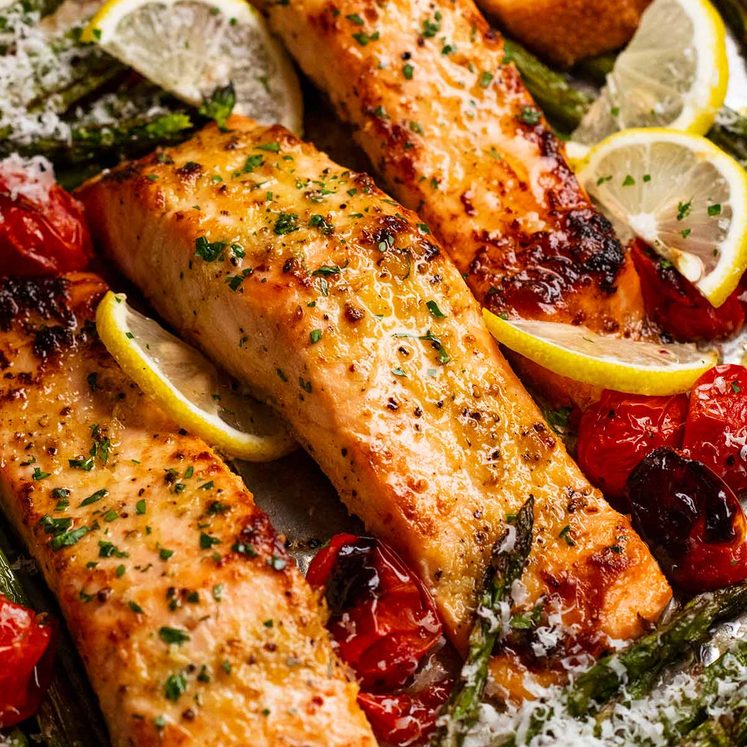
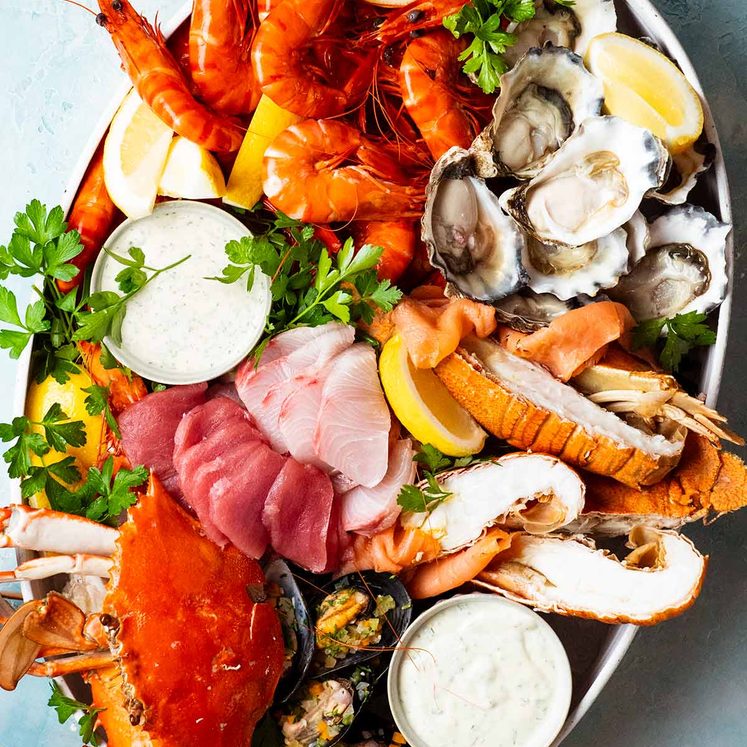
Mahimahi. Kingdom of Tonga
Melbourne, Victoria
Thanks for your wonderful recipes that my family and I enjoy so much!
I love, love salmon, ceviche and your flatbread. I smile and await, “Dozer Doings.” Thank you!
PS I live in Ventura, California, USA
Hello ! =) I am Sallysarah from the British Isles and my favourite fish is Wild Scottish or Alaskan Salmon in big chunky, long fillets with the nutrient rich skin still on it …I cook it in one of my own recipes with a freshly squeezed orange reduction sauce that contains caramelised, finely handcut orange peel, a dash of liquid vegetable bouillon, a bit of butter and cook it around the previously seared salmon (that has a tasty, slighty crunchy lightly spiced, seasoned coating of corn flour/fine matzo meal or a bit of both or other flour – I sometimes use Dove’s Farm Gluten Free Plain Flour as I have a painful allergy to wheat and gluten.) in the pan until it is reduced to a lovely thick sauce to spoon over the tender, perfectly cooked salmon with it’s scrummy outer coating – I add a teaspoon of Bon Maman Bitter Orange Marmalade to melt into the sauce before I reduce it and it gives a special, sweet orangey kick! I have been making it since my twenties and even those fussy boyfriends who said they ‘didn’t eat fish’ said it was the most gorgeous fish dish they had ever tasted and I am humbled and excited to say, it became a favourite with everyone… it really is luxurious, rich and yummy. I serve it with plain white rice and with diced avocado mixed into it or scattered over the top, the clean and contrasting rich flavours really compliment each other =P
…I would just like to add a special *thank you* to you and fuzZy Dozer, Nagi …because I struggle every day with pain because of being a 3 times severe cancer survivor from the age of 14 years old, with many incurable diseases and illnesses as a result of the excessive treatment over many years and because of this I can get very down and depressed and frustrated with all the ways it has destroyed my life, career and inability to have children/make a family or just be out of pain even for a while, but when your email appears each day, I read through it and it makes me smile, often laugh (or even cry through compassion when Dozer is having a hard time) and it brings me some joy…seeing Dozer and reading about his adventures, longing for tidbits of your recipes, his mischief and occasional difficulties… they always touch me as I am a passionate animal lover and deeply miss my own big, fluffy cat, Finbar, who was so closely bonded to me and my dearest, beloved companion. He sadly died a couple of years ago and I still miss him every single day. He loved his food too, like me! I’m a ‘foodie’ and I love your recipes and the warmth and humour you radiate through your messages. You and Dozer brighten up my day so much and it is something I appreciate very deeply….*Thank you* always, for that gift. With a hug to you both and my warmest wishes ~ Sallysarah ~ xX <3 *\('-')/* (Sorry for my comment being long…I've never made one before and I'm quite nervous…)
Hi Nagi, I’m from North Curl Curl, NSW. My favourite fish (I love all fish though), is smoked trout. When younger our family would go down south in the Snowy Mountains of NSW to catch our own trout and smoke it so it’s a childhood fav! Sorry if this is sent twice, my WiFi is bad today 🙁
I live in California, USA.
Love reading your stories and watching all your food videos! You make everything look so yummy! Glad Dozer is feeling better too!💕 i like white fish. 😁
Old fashioned barramundi is a favourite of mine!
New South Wales, Australia
My wife is not a fan of fish. Ill have to make this when we have gest
Hi Nagi, I’m from North Curl Curl, NSW. My favourite fish (I love all fish though), is smoked trout. When younger our family would go down south in the Snowy Mountains of NSW to catch our own trout and smoke it so it’s a childhood fav!
Hi Nagi
Love your site
I live Ballina NSW
Barramundi
Love your recipes Nagi and hearing about dozer and his dog life! I love the sound of ceviche and I’m always looking for different ways to cook or eat our fish. We go fishing every so often when the weather is good and my favourite fish is coral trout. I live In North Queensland, Australia so we fish at the islands and the reef. I think coral trout would be a great fish for this fish as it has pure white flesh and is a very soft meat. I’m anxious to try it! Thank you Nagi!
Any white fish suits my taste. Alberta, Canada
Love tuna sashimi!
Hi Naji I’m from North Curl Curl, NSW. My favourite fish (I love all fish though), is smoked trout. When younger our family would go down south in the Snowy Mountains of NSW to catch our own trout and smoke it so it’s a childhood fav!
South Ayrshire, Scotland.
Difficult to beat fresh halibut.
I’m from Canada. my favourite fish is pickerel caught in a northern Ontario lake. Still enjoying cooking using your recipes
Salmon is my favourite fish.
From Victoria, Australia.
Sorry, Nagi I forgot to say I live in Port Macquarie NSW and I love grilled salmon!
Melbourne, Victoria
Hi Nagi, how about a recipe for a bagel with poppy seeds, onion flakes and sesame seeds? 🤗
I live in Auckland, New Zealand and my favourite fish is Flounder. Delicious dipped in butter and pan fried. I love the crunchy fins and tail!